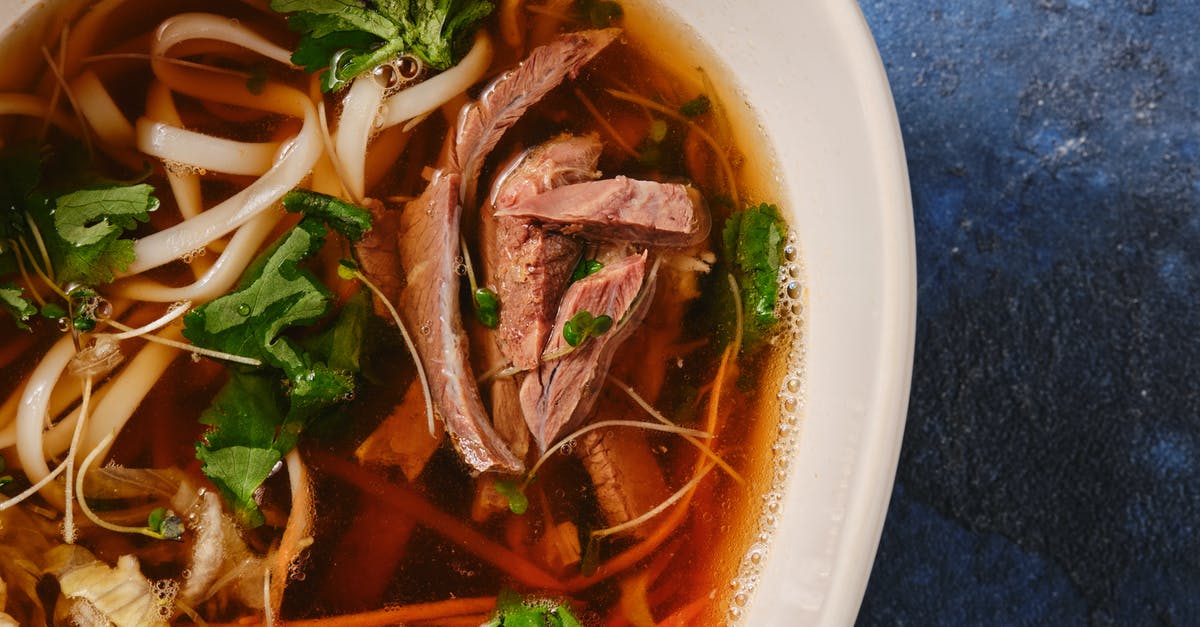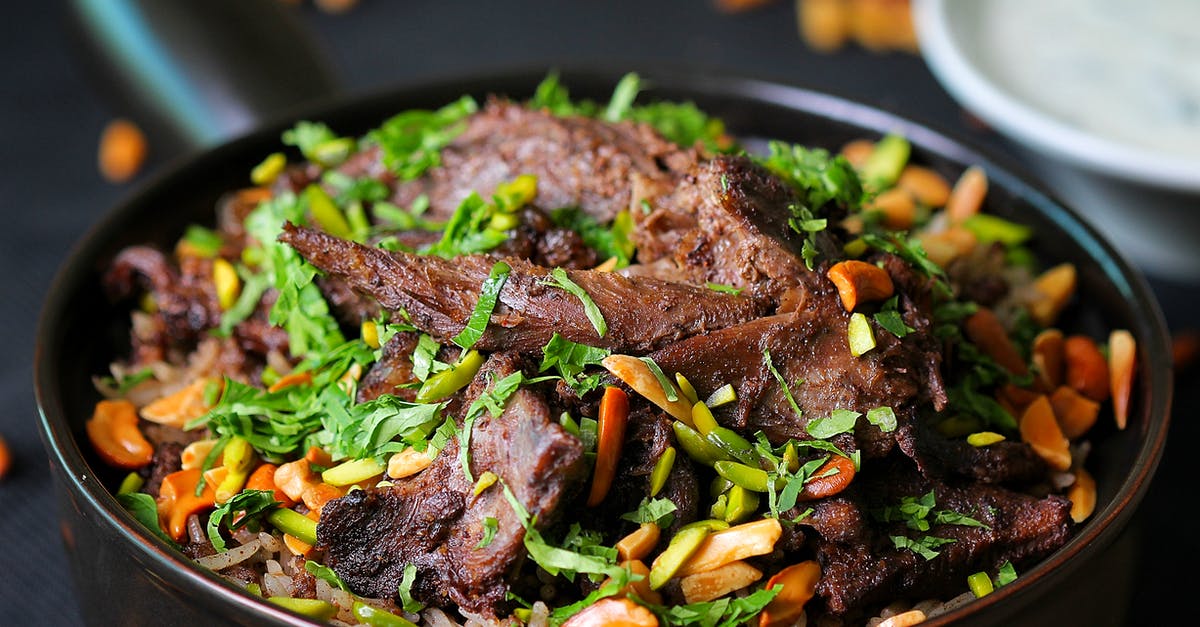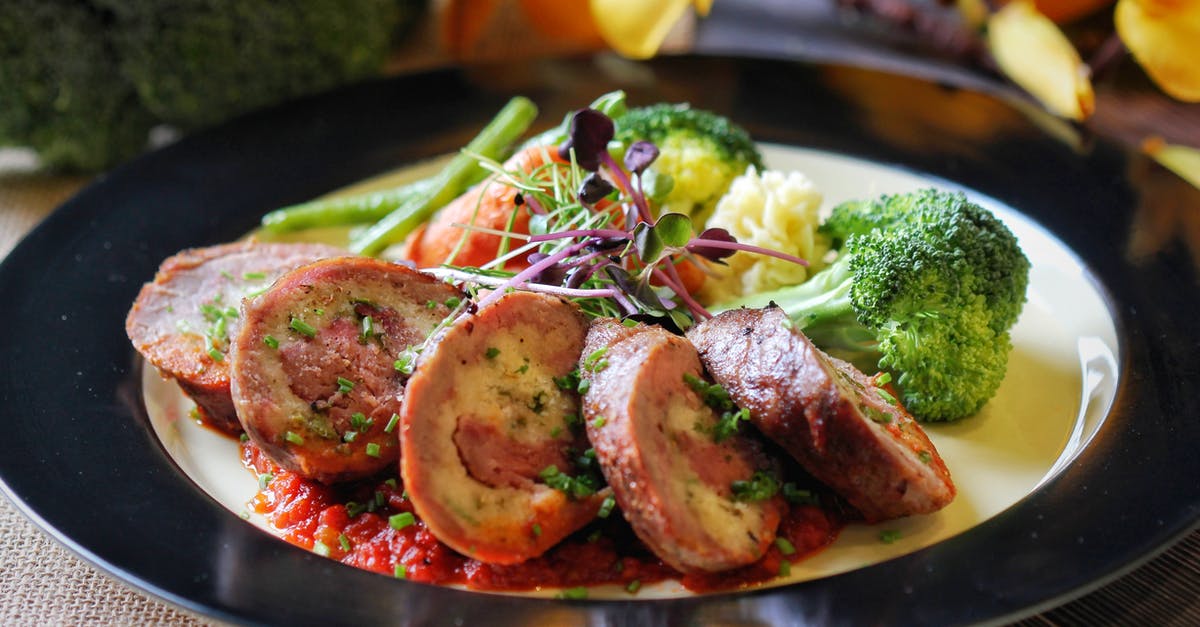Beef Broth - What Went Wrong?

Home-cooked Phở is my white whale. Anyway, before I can cook Phở, I need to be able to make beef broth, and so far I've failed completely.
My broth is greenish-gray in color, mostly flavorless, and smells like a swamp.
Here is what I did. Keep in mind, this happened TWICE:
- I purchased a few pounds of beef knuckles from the store.
- I placed them in a stock pot, and covered them with water.
- I boiled them for a half hour or so.
- I emptied the pot, along with all of the scum.
- I did my best to scrub all of the scum away from the knuckles (very difficult).
- I re-filled the pot with water.
- I brought it to a boil.
- I added some chunks of beef.
- I skimmed the top frequently.
3 hours later: disgusting pond water.
Since this process is so time-consuming, I am not keen on experimenting with it again until I have a pretty good idea of what went wrong. I've asked around for some advice. Some told me I should roast the knuckles first. Some told me I should start with cold water. Ok, this sounds like good advice, but these seem like small potatoes. They certainly don't seem like the sort of thing that could turn a pot of beautiful, delicious beef brother into pond water. I must be doing something horribly, horribly, horribly wrong.
I'm hoping to find someone who has had a similar experience, and has a pretty good idea of why this is happening to me. =(
Best Answer
Some of your 'shortcuts' are not good ideas. Definitely start with cold water. Definitely bring up the temp slowly. Definitely do not boil. Do add aromatics upfront to the broth, but remove them as they get mushy so they don't cloud it.
Standard ratio for beef broth would be: 8 pounds of bones to 6 quarts of water to 1 pound of veggies (onion, leek, carrot) to one 'boquet garni', essentially garlic, rosemary, anise flavoring for pho, and bay leaf, plus whatever else I forgot.
If you have 'pond water', which I interpret as thin-tasting, you probably put too much water in the second time -- this is fixable by slowly evaporating out the water until it gets to a good texture. If you skimmed properly, it will be clear as you do this. I will typically strain through a kitchen towel or cheesecloth as the liquid evaporates down.
I'm guessing you put in like a gallon of water, so you had like three or four times too much water.
As a warning which you probably already know, you are not going to be able to duplicate your local pho joint's broth -- the broth recipe is the thing for pho makers, and they probably have a bunch of tricks they use, including using a neverending supply of yesterdays pho, that you won't be able to do at home. That said, you should be able to get a good beef broth if you follow some basic rules for making stock.
Pictures about "Beef Broth - What Went Wrong?"



What happens when beef broth goes bad?
How can you tell if beef broth is bad or spoiled? The best way is to smell and look at the beef broth: if the beef broth develops an off odor, flavor or appearance, or if mold appears, it should be discarded. Discard all beef broth from cans or packages that are leaking, rusting, bulging or severely dented.Why is my beef broth watery?
Broth that doesn't gel might contain some gelatin, but the gelatin is too diluted to really make it gel \u2013 think of the watery mess you get if you try to use just half a packet of Jell-O mix in the same amount of water.Can you mess up bone broth?
Simmer Your Bones Long Enough, But Not Too Long Yet, if you cook your broth too long, it will develop overcooked, off-flavors that can become particularly unpleasant if you've added vegetables to the broth pot which tend to break down, tasting at once bitter and overly sweet.Why does my bone broth not gel?
If your bone broth doesn't gel that doesn't mean it's bad by any means. Sometimes you may not want a gelatin-rich bone broth. Shorter cooked broths with more meat than bones (and thus little gelatin) can be just as delicious as longer cooked, gelatin-rich broths.More answers regarding beef Broth - What Went Wrong?
Answer 2
Caveat: I'm now a vegetarian
Back when I made stock/broth a lot, I always browned the meat under a hot broiler before cooking. That makes a serious difference, because the browning reactions of the meet definitely have a big flavor impact.
I also added one or two brown onions (also quartered and roasted until somewhat browned), and two or three carrots (ditto).
I never did that rinse/scrub process. Skim the flotsam, but keep the heat down so that it's barely simmering and it shouldn't be a problem. You can get very useful fine-mesh skimmers at Asian grocery stores.
Finally, I cooked it for a long time - like 10 or 12 hours sometimes, adding water as necessary. When it cooled, I'd skim off most of the fat (sometimes saving it because it's great to use in vegetable dishes like Bubble & Squeak) then transfer to storage jars.
Don't season the stock with spices or herbs until you're ready to use it. That way it remains versatile.
Answer 3
I made a pretty successful beef pho recently. I agree with the other comments about the importance of roasting the bones first, bringing up the temperature of the water slowly, adding vegetables (onion, celery and carrot for a basic beef stock, plus a hunk of ginger root, along with cinnamon stick, star anise, and peppercorns tied up in a little cheesecloth bundle for pho.)The biggest thing I believe you did wrong though? Three hours is no where near long enough to make good beef stock. I let mine simmer (never boiling!) For...no lie... About 24-36 hours. Sounds crazy but the longer you can cook it the richer and better it will be. After only 3 hours any stock will look like pond water. Don't worry, you can turn the stove off when you leave the house and then turn it back on again so you're not a total slave to the stock for 2 days. But yeah, that's it I think. Just lots more time.
I'd probably also recommend a mix of bones including marrow bones, rib or neck bones with some meat on them, and maybe a foot for extra gelatin if you can get it, in addition to the knuckles.
Answer 4
Roasting the knuckles is a must, since the way the Maillard reaction affects anything animal-based is priceless for enhancing flavor.
Another important thing is to use vegetables when making stock. Add coarsely cut carrots and celery, whole or half onions to the pot along with the bones.
Straining the stock is important to remove congealed proteins from the end product. The thinner the filter, the better.
Answer 5
First, let me say I've never made pho.
However there is already some good advice here with regards to stock:
- Should I roast meat/bones before making stock out of it? though I personally would also roast carrots, onion, celery with fresh herbs in with the bones.
- Should I let stock cool with the bones/veg still in it?
- Are the leftovers from making stock good for anything?
What are you skimming with? I'd pour the liquid through some cheese cloth, that should at least help with appearance a bit.
Answer 6
There should never be greenish scum in your broth. Bones are eather very old or from a sick animal. If you see greenish foam in your pot, it's poisoning, don't eat it. I was raised on organic farm. We had bone soups every day. Believe me, it has to look good in order to be good for you. The foam, if any, should be very light in color and very small in amount. Get bones from trusted farmers, if you want good quality broth.
Sources: Stack Exchange - This article follows the attribution requirements of Stack Exchange and is licensed under CC BY-SA 3.0.
Images: Kiro Wang, Shameel mukkath, Shameel mukkath, Ann H
